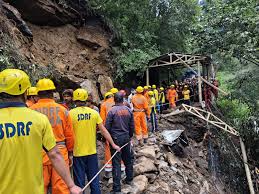
NSE severe storm response
NSE Severe Storm Response A Comprehensive Overview of Preparedness and Recovery Efforts
New South Wales recently faced a severe storm event that tested the resilience of the state’s emergency response systems, infrastructure, and community readiness. The storm, characterized by intense rainfall, damaging winds, and flash flooding, led to widespread disruptions across urban and regional areas alike. As the storm unfolded, the NSE government, emergency services, and local authorities rapidly mobilized resources to mitigate the immediate impacts and support affected communities. This event not only highlighted the importance of disaster preparedness but also revealed areas where response mechanisms can be further strengthened.
The storm’s approach was closely monitored by meteorological agencies, who issued timely warnings to residents and businesses in vulnerable areas. Early alerts helped facilitate pre emptive actions such as evacuation notices, road closures, and the suspension of public transportation in high risk zones. Local councils activated emergency operation centers to coordinate logistics and disseminate critical information through multiple channels, including social media, community hotlines, and public broadcasts. Despite these measures, the sheer intensity and rapid onset of the storm overwhelmed some preparedness efforts, leading to significant challenges for response teams on the ground.
Once the storm hit, emergency services were inundated with calls for assistance related to flooded homes, fallen trees, and power outages. The State Emergency Service (SES) played a pivotal role in rescuing stranded residents, clearing debris, and providing emergency shelter to those displaced. Fire and Rescue NSE also contributed by responding to incidents involving structural damage and hazardous conditions. Coordination between agencies was critical, and the implementation of a unified command structure helped streamline communication and resource allocation. Nevertheless, the scale of the disaster required sustained efforts over several days to address all urgent needs adequately.
Infrastructure damage was extensive in several areas, particularly those along riverbanks and low lying regions prone to flooding. Roads became impassable, isolating some communities and complicating rescue and relief operations. Power outages affected thousands, with repair crews working tirelessly to restore electricity amidst ongoing adverse weather conditions. Telecommunications disruptions further hindered communication, underscoring the necessity for resilient infrastructure and contingency plans. Authorities prioritized restoring essential services, recognizing that prompt recovery of utilities was vital for health, safety, and economic stability.
The human toll of the storm extended beyond physical damage. Many families faced displacement, property loss, and psychological stress as they navigated the aftermath. Community support networks activated quickly, with local volunteer groups, non profits, and religious organizations providing food, shelter, and emotional support. The government announced financial aid packages and grants to assist homeowners and businesses in rebuilding and recovering. Mental health services were also emphasized, acknowledging the trauma associated with natural disasters and the importance of holistic recovery strategies that address both material and emotional well being.
In response to the event, the NSE government launched a thorough review of the storm preparedness and response protocols. Initial assessments praised the timely warnings and rapid mobilization of emergency services but also identified areas requiring improvement. Recommendations included enhancing floodplain mapping and risk communication, increasing investment in infrastructure resilience, and expanding community education programs on emergency preparedness. There is a growing consensus that climate change is likely to increase the frequency and severity of such storms, necessitating a forward looking approach to disaster management that incorporates adaptive planning and robust mitigation measures.
The storm also spurred innovation and collaboration in emergency management. Technologies such as real time data analytics, drone surveillance, and mobile alert systems proved invaluable in tracking storm development and directing response efforts. Partnerships between government agencies, private sector entities, and academic institutions facilitated resource sharing and knowledge exchange, strengthening overall capacity. Moreover, community engagement efforts emphasized building local resilience through training, preparedness drills, and fostering social cohesion, which are critical for effective response when disasters strike.
Looking ahead, the severe storm in NSE serves as a stark reminder of the challenges posed by natural disasters and the necessity for continual vigilance and investment in emergency response capabilities. While the immediate crisis has subsided, long term recovery efforts will continue for months, if not years, focusing on rebuilding infrastructure, restoring livelihoods, and reinforcing systems to better withstand future events. The experience underscores that preparedness is not a one time task but an ongoing process requiring commitment from all levels of government, the private sector, and communities themselves. Together, these efforts can help NSE build a safer, more resilient future in the face of increasingly volatile weather patterns.










